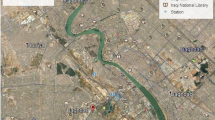Abstract
Since to 1990, Urbanization has occurred due to an increase in the number of unpredicted citizens and migration from the countryside to the city. This has resulted in the development of factories, lack of public transportation, and the expansion of the traditional tent (ger) area. Besides that, as the lifestyle and socio-economic situation of the citizens is changing, in this regards amount of the municipal waste and type of waste are also increasing. This research analyzed each of the waste disposal methods, to develop and select the waste management best option. Also, scenario analysis to forecast the future evolution of municipal solid waste until 2030 under a different waste management plan. The waste management model was developed intending to promote sustainable decision-making, covering four columns: technical, environmental, economic, and social aspects. For it, the System Dynamics to design a mathematical model was based on the waste disposal data from 2011 to 2018. The first, based on the municipal waste disposal budget data, comprises systems engineering models including cost–benefit analysis, forecasting analysis of each scenario exploring opportunities to increase waste revenues and reducing annual costs from waste transportation, collection services, and waste treatment. The second introduces system assessment tools including Life Cycle Inventory (LCI), Scenario Development (SD), Material Flow Analysis (MFA), Life Cycle Assessment (LCA), Life Cycle Impact Assessment (LCIA), and Life Cycle Cost Analysis (LCCA). IPCC-2006 package was used to support the LCA and Emission Quantification Tool (EQT). The analysis includes a LCA, wherein direct and indirect Greenhouse gas (GHG) emissions during landfilling, waste incineration, Mechanical Biological Treatment (MBT) processing, composting, recycling, and the overall energy consumption from Municipal Solid Waste (MSW) treatment system were considered for the city. In this research, a questionnaire survey has been conducted for experts and Multi Criteria Decision Analysis (MCDA), the technique, helped to capture the knowledge of the local experts. Also, using the Technique for Order Preference by Similarity to Ideal Solution (TOPSIS), and ranked various waste disposal methods. As the result, the possibility of changing the management system that incurs losses each year to cover the costs of waste transportation, waste sorting, and recycling can be offset by waste management activities rather than the state budget. The results have shown that waste incineration is the most cost-effective option in Ulaanbaatar city in terms of saving coal resources and reducing coal production.







Similar content being viewed by others
References
Battsengel E, Murayama T, Nishikizawa S, Chonokhuu S (2021) Evaluation of daily behaviors related to health risks of the ger residents in Ulaanbaatar, Mongolia. Sustainability 13:4817
Byamba B, Ishikawa M (2017) Municipal solid waste management in Ulaanbaatar, Mongolia: systems analysis. Sustainability 9:896
Batkhuyag S, Tuuguu T, Dote E (2016) Characteristics of household waste and coal ash in Ulaanbaatar, Mongolia. Society of Material Cycle and Waste Management
Murun T (2015) Extended producer responsibility program for household hazardous waste management and human health risk assessment in developing countries: Ulaanbaatar city, Mongolia
JICA conducted a Study “The Study on Solid waste management plan for Ulaanbaatar city in Mongolia”
Hermanna BG, Kroezea C (2007) Assessing environmental performance by combining life cycle assessment, multi-criteria analysis, and environmental performance indicators. J Clean Prod 15(18):1787–1796
Lai Y-J, Liu T-Y, Hwang C-L (1994) Theory and methodology TOPSIS for MODM. Eur J Oper Res 76(3):486–500
Montejoa C, Toninib D, del Carmen Marquesan M, Astrupb TF (2015) Mechanical–biological treatment: performance and potentials. An LCA of MBT plants including waste characterization
Diaz R, Warith M (2006) Life-cycle assessment of municipal solid wastes: development of the WASTED model. Waste Manag 26:886–901
Hazelrigg GA (2003) Validation of engineering design alternative selection methods. Eng Optim 35(2):103–120
Yang JB, Wang J, Xu DL, Dale BG, Kieran O, Ruxton T (2009) Multiple criteria decision analysis applied to safety and cost synthesis. Renew Sustain Energy Rev 13(9):2263–2278
Funding
Kitakyushu Foundation for the Advancement of Industry, Science and Technology
Author information
Authors and Affiliations
Corresponding author
Additional information
Publisher's Note
Springer Nature remains neutral with regard to jurisdictional claims in published maps and institutional affiliations.
Rights and permissions
Springer Nature or its licensor (e.g. a society or other partner) holds exclusive rights to this article under a publishing agreement with the author(s) or other rightsholder(s); author self-archiving of the accepted manuscript version of this article is solely governed by the terms of such publishing agreement and applicable law.
About this article
Cite this article
Gombojav, D., Matsumoto, T. Multi criteria decision analysis to develop an optimized municipal solid waste management scenario: a case study in Ulaanbaatar, Mongolia. J Mater Cycles Waste Manag 25, 1344–1358 (2023). https://doi.org/10.1007/s10163-023-01603-0
Received:
Accepted:
Published:
Issue Date:
DOI: https://doi.org/10.1007/s10163-023-01603-0




